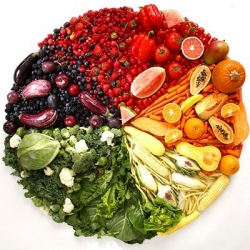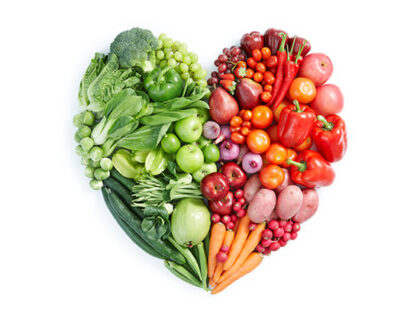
Description
Welcome to Food and Culture
Update About Final Blog
Hello everyone, I wanted to inform everyone about what I told students in class on Monday.
I am trying to relieve a little pressure for the end of the semester by reducing the word count and sources required for the blog. I also extended the ‘final’ deadline.
1 – Here is the new grading rubric and assignment description. The range is now 400 – 600 words, you only need 4 reliable/valid sources, and you only have to connect to three chapters of the readings (with excellence) to get an A.
2 – I encourage you to submit your assignments on Monday the 11th, but the last day I will take an assignment is April 14th in hard copy in my mailbox on the 11th floor of the Hall Building (no emailed assignments). I will retrieve all the assignments first thing in the morning on the 15th. I cannot accept anything after that, even by email.
Course Details
Day/Time: Monday at 8:30 – 10:45 PM
Office Hours: By Request (Zoom meetings for now)
Classroom: Remote (on Zoom) and H 509 SGW
Course Description
Food is an important part of cultural studies. It is central to many cultural rituals, like feasts and festivals; it has been a catalyst for global resistance to capitalism, like in the food sovereignty movement; it is embedded with a variety of beliefs and customs, like religious diets (i.e. Kosher and Halal); it is a uniting force for the development of a social economy, like in the development of food cooperatives; it has also been a central theme in countless cultural texts, films and literature; most importantly, it is what keeps people alive.
In this course, we will explore themes related to food and culture including: meaning and practice, representation and identity, global and local food production and food politics. We will focus on the political economy of food by examining how food is produced, transformed, distributed, consumed, and how food waste is managed in different areas of the world. We will take a critical perspective to analyze multinational food corporations, like Bayer, by looking at the consequences of large scale industrialized farming, monoculture, and the privatization of genetics. These consequences include, the use of GMOs and the loss of biodiversity; reliance on fossil fuels and its contribution to climate change; use of glyphosate and the accompanying health effects; seed patents and loss of food sovereignty; use of natural resources and the depletion of water and food supplies; among others.
We will also explore what certain cultures are doing to prevent these negative consequences. We will look at the slow food movement coming out of Italy and Ireland as a way of re-localizing food production, processing and consumption – aka. the farm to plate movement; we will examine the food sovereignty movement coming out of Mexico at La Via Campesina assembly in 1996 – which is now being popularized globally; we will learn about the Detroit Black Community Food Security Network and their initiative to reclaim food sovereignty, food justice and eliminate food insecurity; we will also look at sustainable production, like seed saving, indigenous practices, permaculture, rooftop gardening, and organic farming. Moreover, we will read about and discuss a variety of beliefs and customs regarding food by addressing the differences in cultural symbolism of plants and animals in different parts of the world.
In this course, we will partake in the ‘practice’ of food. Students will perform various activities that encourage them to connect with food production, transformation and waste management. They will write about and discuss the cultural significance, meaning and symbolism of these food practices.
Course Materials
Required Reading
Students are expected to complete ALL the designated readings and watch ALL of the assigned videos BEFORE EACH CLASS. Students are also expected to attend ALL classes, and participate in class discussions.
Counihan, C., Van Esterik, P, Julier, A. (2019) Food and Culture: A Reader, 4th edition, Routledge.
Brulotte, R., Di Giovine, M. A. (2016) Edible Identities: Food as Cultural Heritage, Routledge.
Course Format
This course will be given remotely via Zoom and in-person once the Quebec Government reopens universities and Concordia mandates us to go back in person. Students are expected to attend the lectures and participate in the online and in-person activities during the times allotted for the course. Online lectures will be filmed and made available to students. Online discussions and activities will not be recorded or made available to other students (or the general public). I am not recording the discussion/activity part of online classes so students can feel comfortable sharing ideas and thoughts without fear of being filmed and broadcast. In-person classes will not be recorded or broadcast. It is up to the student to attend in-person classes.
In the course, I will use a variety of pedagogical styles including lectures, discussions, guest speakers (possibly), field trips (maybe), community service learning and/or experiential learning. Sometimes I may upload a prerecorded lecture or podcast to watch for the first portion of the course, then I will sign in and lead a discussion. At other times, I will give a live lecture and film it for others to view. Nonetheless, students are expected to attend the course online and in-person.
Students are expected to read the required text before coming to class. In class and online, students will engage with each other through interactive activities, discussions and by talking with people who work with food – production, transformation, distribution, and waste management.
Course Evaluation
| Assignments | Due Date | Grade Weight |
| Participation | Ongoing | 10 |
| Blog 1 – Food Meaning and Practice | February 25 | 30 |
| Blog 2 – Edible Identities | March 25 | 30 |
| Blog 3 – Global Food Issues | April 11 | 30 |
| Total | 100% |
Assignments
Participation: The participation grade is based on attendance, involvement in discussions, participation in classroom activities and supplemental tasks (i.e. you will grow a plant from seed and will inform classmates about your experience with the plant).
Blog Posts: Students will write three blogs of about 600 – 1000 words about the practice and meaning of food, edible identities and global food issues. Although this is a blog, the information conveyed must come from research, not conjecture. In addition, the blog must contain at least eight reliable, valid, credible sources and reference the course readings. Students with production skills can produce a video or a podcast instead of a blog; however, this must also be approved by me (Erik Chevrier).
Letter Grade Equivalency
A+ (95 – 100%) B+ (80 – 84.9%) C+ (67 – 69.9%) D+ (57– 59.9%)
A (90 – 94.9%) B (75 – 79.9%) C (63 – 66.9%) D (53 – 56.9%)
A- (85 – 89.9%) B- (70 – 74.9%) C- (60 – 62.9%) D- (50 – 52.9%)
F < 50%
Class Schedule, Themes and Required Readings
This is a TENTATIVE schedule and is subject to change. Be sure to consult the course website regularly to be aware of any changes.
January 10 – Introduction to Food and Culture Course
Activity Theme: Food Production – Growing Food (Seedlings)
January 17 – Introduction to Food and Culture
Counihan, C., Van Esterik, P, Julier, A. (2019) Food and Culture: A Reader, 4th edition, Routledge.
Introduction – Continuing the Salience of Food and Culture (p. 1 – 12)
Brulotte, R., Di Giovine, M. A. (2016) Edible Identities: Food as Cultural Heritage, Routledge.
Introduction – Introduction: Food and Foodways as Cultural Heritage (p. 1 – 28)
Activity Theme: Food Production – Growing Food (Plant Care)
January 24 – Food Meaning and Practice
Counihan, C., Van Esterik, P, Julier, A. (2019) Food and Culture: A Reader, 4th edition, Routledge.
Chapter 1 – Towards a Psychosociology of Contemporary Food Consumption (p. 13 – 21)
Chapter 2 – The Culinary Triangle (p. 21 – 28)
Chapter 3 – Deciphering a Meal (p 29 – 47)
Activity Theme: Starting a Sourdough
January 31 – Food Meaning and Practice
Counihan, C., Van Esterik, P, Julier, A. (2019) Food and Culture: A Reader, 4th edition, Routledge.
Chapter 6 – Cooking Skills, the Senses, and Memory: The Fate of Practical Knowledge (p. 88 – 109)
Chapter 7 – Race, Place and Taste: Making Identities Through Sensory Experience in Equador (p. 110 – 126)
Chapter 8 – The Raw and the Rotten: Punk Cuisine (p. 127 – 140)
Activity Theme: Making Bread
February 7 – Representation and Identity
Counihan, C., Van Esterik, P, Julier, A. (2019) Food and Culture: A Reader, 4th edition, Routledge.
Chapter 9 – Distinction: A Social Critique of the Judgement of Taste (p. 141 – 150)
Chapter 10 – The Nourishing Arts (p. 151 – 162)
Chapter 11 – Towards Queering Food Studies: Foodways, Heteronormativity and Hungry Women in Chicana Lesbian Writing (p. 163 – 176)
Activity Theme: Food Transformation (Preservation – Fermentation)
February 14 – Representation and Identity
Counihan, C., Van Esterik, P, Julier, A. (2019) Food and Culture: A Reader, 4th edition, Routledge.
Chapter 12 – A Way Outa No Way: Eating Problems Among African-American, Latina, and White Women (p 177 – 190)
Chapter 14 – I Haven’t Eaten If I don’t Have My Soup and Fufu: Cultural Preservation Through Food and Foodways Among Ghanaian Migrants in the United States (p. 205 – 220)
Chapter 15 – The Signifying Dish: Autobiography and History in Two Black Women’s Cookbooks (p. 221 – 235)
Activity Theme: Food Transformation (Preservation – Canning)
February 21 – Edible Identities
Brulotte, R., Di Giovine, M. A. (2016) Edible Identities: Food as Cultural Heritage, Routledge.
Chapter 1 – Re-Inventing a Tradition of Intervention: Entrepreneurialism as Heritage in American Artisan Cheesemaking (p. 29 – 38)
Chapter 4 – Edible Authenticities: Heirloom Vegetables and Culinary Heritage in Kyoto, Japan (p. 67 – 76)
Chapter 6 – Take the Chicken Out of the Box: Demystifying the Sameness of African American Culinary Heritage in the U.S. (p. 93 – 108)
Chapter 8 – Hallucinating the Slovenian Way: The Myth of Salamander Brandy, an Indigenous Slovenian Psychedelic Drug (p 125 – 140)
March 7 – Edible Identities
Brulotte, R., Di Giovine, M. A. (2016) Edible Identities: Food as Cultural Heritage, Routledge.
Chapter 9 – Haute Traditional Cuisines: How UNESCO’s List of Intangible Heritage Links the Cosmopolitan to the Local (p. 141 – 158)
Chapter 11 – French Chocolate as Intangible Cultural Heritage (p. 175 – 184)
Chapter 13 – The Mexican and Transnational Lives of Corn: Technological, Political, Edible Object (p. 201 – 218)
Chapter 14 – Cultural Heritage in Food Activism: Local and Global Tensions (p. 219 – 230)
Activity Theme: Food distribution (Farmers Markets)
March 14 – Global and Local Production
Counihan, C., Van Esterik, P, Julier, A. (2019) Food and Culture: A Reader, 4th edition, Routledge.
Chapter 18 – Industrial Food: Towards the Development of a World Cuisine (p. 263 – 282)
Chapter 19 – Remaking Traditions: How We Eat, What We Eat and the Changing Political Economy of Food (p. 283 – 299)
Chapter 21 – On the Move for Food: Three Women Behind the Tomatoes Journey (312 – 322)
March 21 – Global and Local Production
Counihan, C., Van Esterik, P, Julier, A. (2019) Food and Culture: A Reader, 4th edition, Routledge.
Chapter 24 – Jolly Dogs and McSpaghetti: Anthropological Reflections on Global/Local Fast-Food Competition in the Philippines (p. 351 – 362)
Chapter 25 – Too Hot to Handle: Food, Empire, and Race in Thai Los Angeles (p. 363 – 384)
Chapter 26 – Old Stock Tamales and Migrant Tacos: Taste, Authenticity and the Naturalization of Mexican Food (p. 385 – 400)
March 28 – Food Politics
Counihan, C., Van Esterik, P, Julier, A. (2019) Food and Culture: A Reader, 4th edition, Routledge.
Chapter 28 – Re-Purposing the Master’s Tools: The Open Source Seed Initiative and the Struggle for Seed Sovereignty (p. 414 – 438)
Chapter 29 – Preface to the Tenth Anniversary Edition of Food Politics (p. 439 – 442)
Chapter 30 – The Disappearance of Hunger in America (p. 443 – 449)
April 4 – Food Politics
Counihan, C., Van Esterik, P, Julier, A. (2019) Food and Culture: A Reader, 4th edition, Routledge.
Chapter 33 – Expanding Access to Alternatives: Building Farmers’ Markets in Low-Income Communities (p. 480 – 492)
Chapter 34 – Slow Food and the Politics of Virtuous Globalization (p. 493 – 509)
Chapter 35 – Learning Democracy Through Food Justice Movements (p. 510 – 524)
April 11 – Course Wrap-up
Late Assignment Policy
Unless you are given permission in advance, late assignments will not be accepted without adequate documentation of medical or personal emergencies.
A list of Student Services and Useful Resources
Counselling and Psychological Services: http://concordia.ca/students/counselling-life-skills
Concordia Library Citation and Style Guides: http://library.concordia.ca/help/howto/citations
Student Success Centre: http://concordia.ca/students/success
Health Services: http://concordia.ca/students/health
Financial Aid and Awards: http://concordia.ca/offices/faao
HOJO (Off Campus Housing and Job Bank): http://csu.qc.ca/hojo
Academic Integrity: http://concordia.ca/students/academic-integrity
Access Centre for Students with Disabilities: http://concordia.ca/offices/acsd
CSU Advocacy Centre: http://csu.qc.ca/advocacy
Dean of Students Office: http://concordia.ca/offices/dean-students
International Students Office: http://concordia.ca/students/international
Student Hub: http://concordia.ca/students
Sexual Assault Resource Centre: http://concordia.ca/students/sexual-assault.html
Indigenous Directions: http://concordia.ca/about/indigenous.html
University Rights and Responsibilities
Academic Integrity: “The Academic Code of Conduct sets out for students, instructors and administrators both the process and the expectations involved when a charge of academic misconduct occurs. The regulations are presented within the context of an academic community which seeks to support student learning at Concordia University.” (From Article 1 of the Academic Code of Conduct). Full text:
http://www.concordia.ca/students/academic-integrity/offences.html
Plagiarism: The most common offense under the Academic Code of Conduct is plagiarism, which the Code defines as “the presentation of the work of another person as one’s own or without proper acknowledgement.” This includes material copied word for word from books, journals, Internet sites, professor’s course notes, etc. It refers to material that is paraphrased but closely resembles the original source. It also includes for example the work of a fellow student, an answer on a quiz, data for a lab report, a paper or assignment completed by another student. It might be a paper purchased from any source. Plagiarism does not refer to words alone –it can refer to copying images, graphs, tables and ideas. “Presentation” is not limited to written work. It includes oral presentations, computer assignment and artistic works. Finally, if you translate the work of another person into any other language and do not cite the source, this is also plagiarism. In Simple Words: Do not copy, paraphrase or translate anything from anywhere without saying where you obtained it! Source: Academic Integrity Website: http://concordia.ca/students/academic-integrity
Disabilities: The University’s commitment to providing equal educational opportunities to all students includes students with disabilities. To demonstrate full respect for the academic capacities and potential of students with disabilities, the University seeks to remove attitudinal and physical barriers that may hinder or prevent qualified students with disabilities from participating fully in University life. Please see the instructor during the first class if you feel you require assistance.
For more information please visit http://concordia.ca/offices/acsd
Safe Space (Virtual and Physical) Classroom: Virtual classrooms are considered ‘safe space virtual classrooms’. In order to create a climate for open and honest dialogue and to encourage the broadest range of viewpoints, it is important for class participants to treat each other with respect. Name-calling, accusations, verbal attacks, sarcasm, and other negative exchanges are counter-productive to successful teaching and learning. The purpose of class discussions is to generate greater understanding about different topics. The expression of the broadest range of ideas, including dissenting views, helps to accomplish this goal. However, in expressing viewpoints, students should try to raise questions and comments in ways that will promote learning, rather than defensiveness and feelings of conflict in other students. Thus, questions and comments should be asked or stated in such a way that will promote greater insight into the awareness of topics as opposed to anger and conflict. The purpose of dialogue and discussion is not to reach a consensus, nor to convince each other of different viewpoints. Rather, the purpose of dialogue in the classroom is to reach higher levels of learning by examining different viewpoints and opinions with respect and civility.
Land Acknowledgement
I acknowledge that Concordia University is located on unceded Indigenous lands. The Kanien’kehá:ka Nation is recognized as the custodians of the lands and waters on which we gather today. Tiohtiá:ke/Montreal is historically known as a gathering place for many First Nations. Today, it is home to a diverse population of Indigenous and other peoples. We respect the continued connections with the past, present and future in our ongoing relationships with Indigenous and other peoples within the Montreal community. (Indigenous Directions Leadership Group, Feb. 16, 2017)



